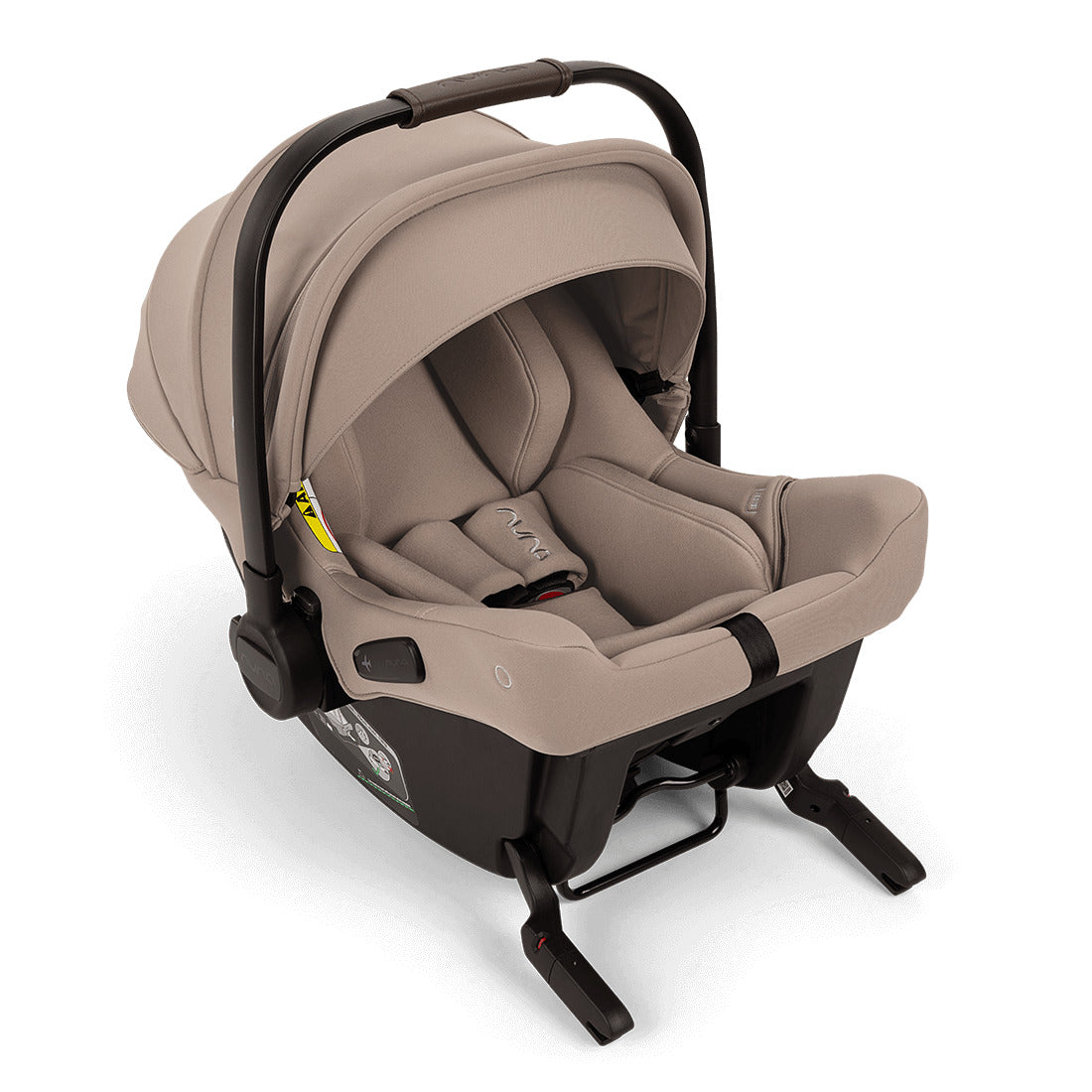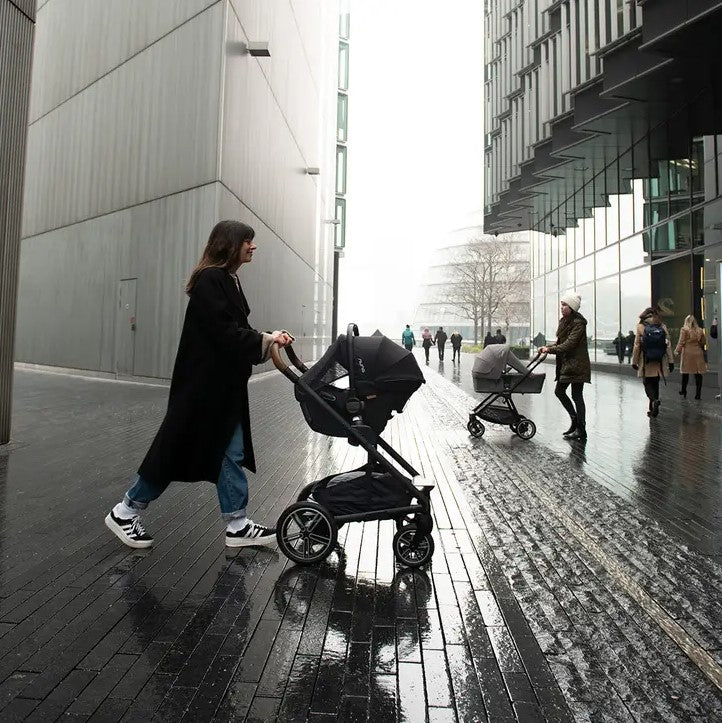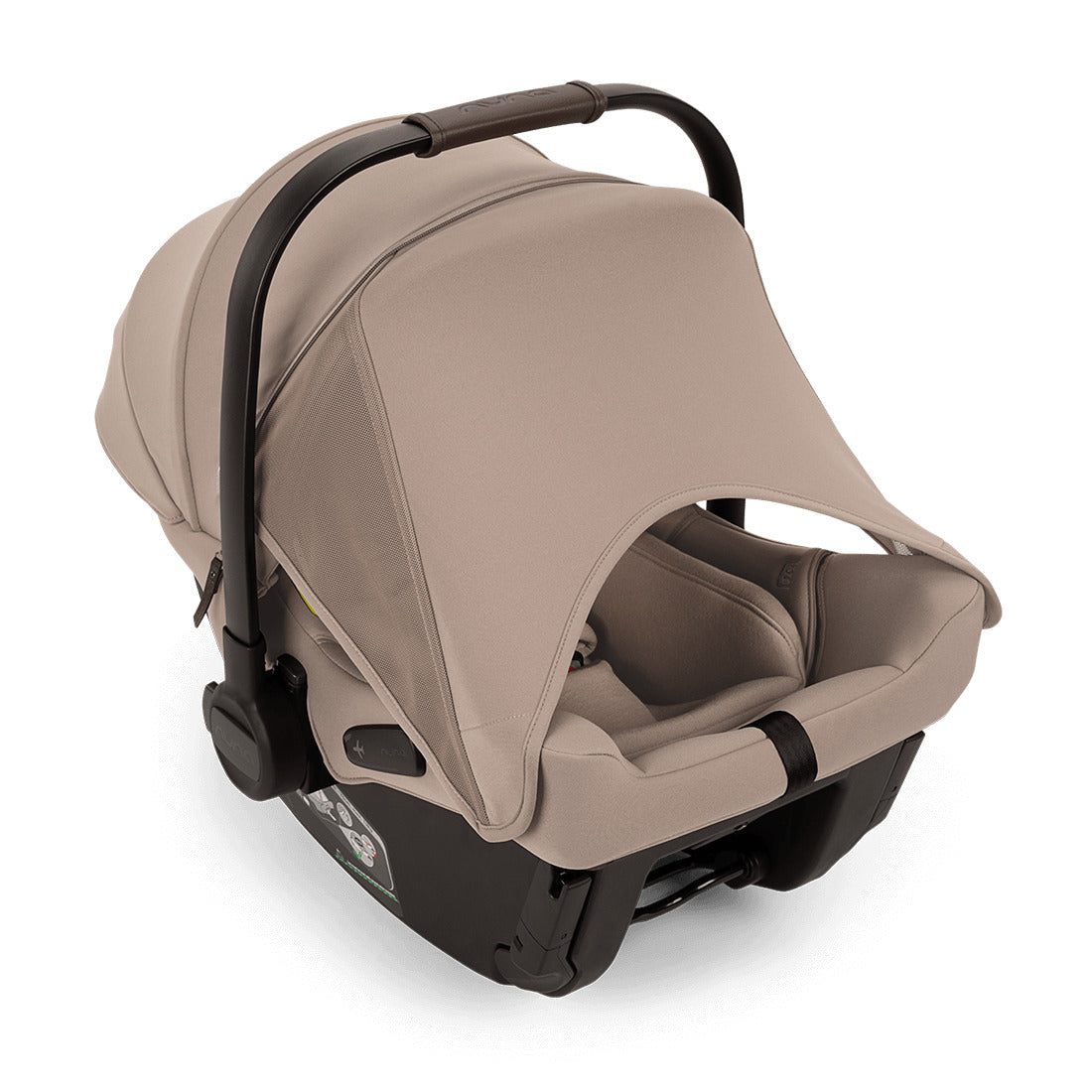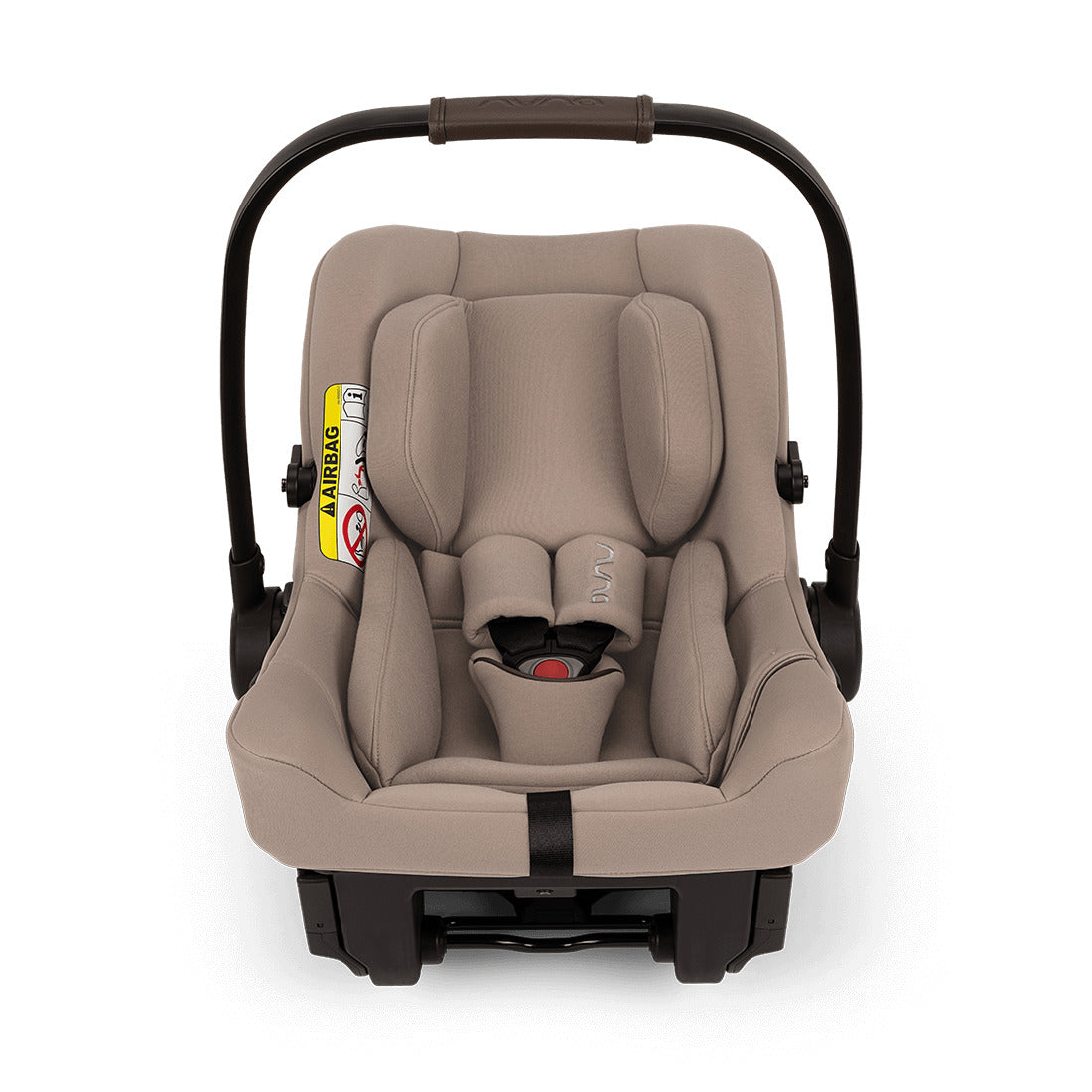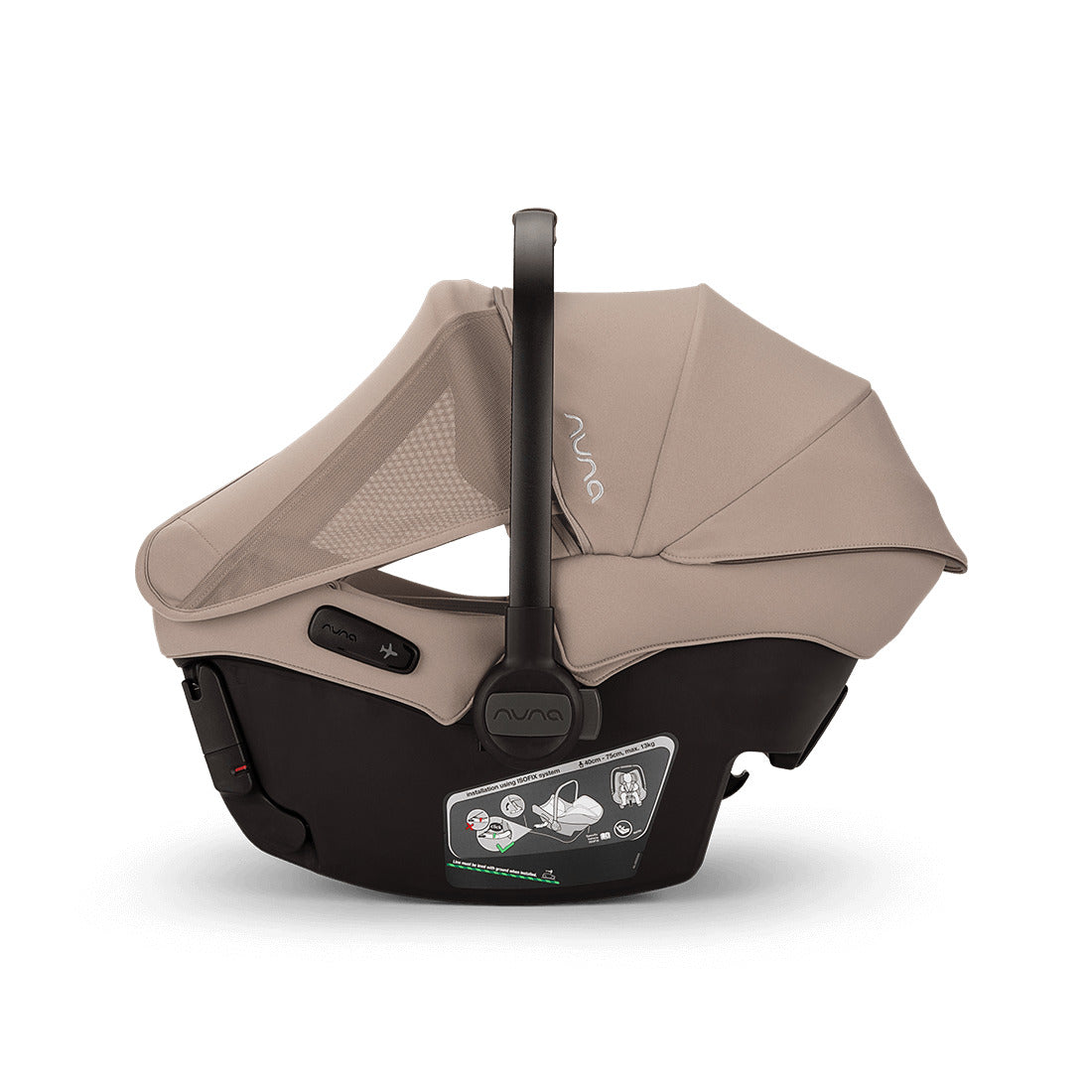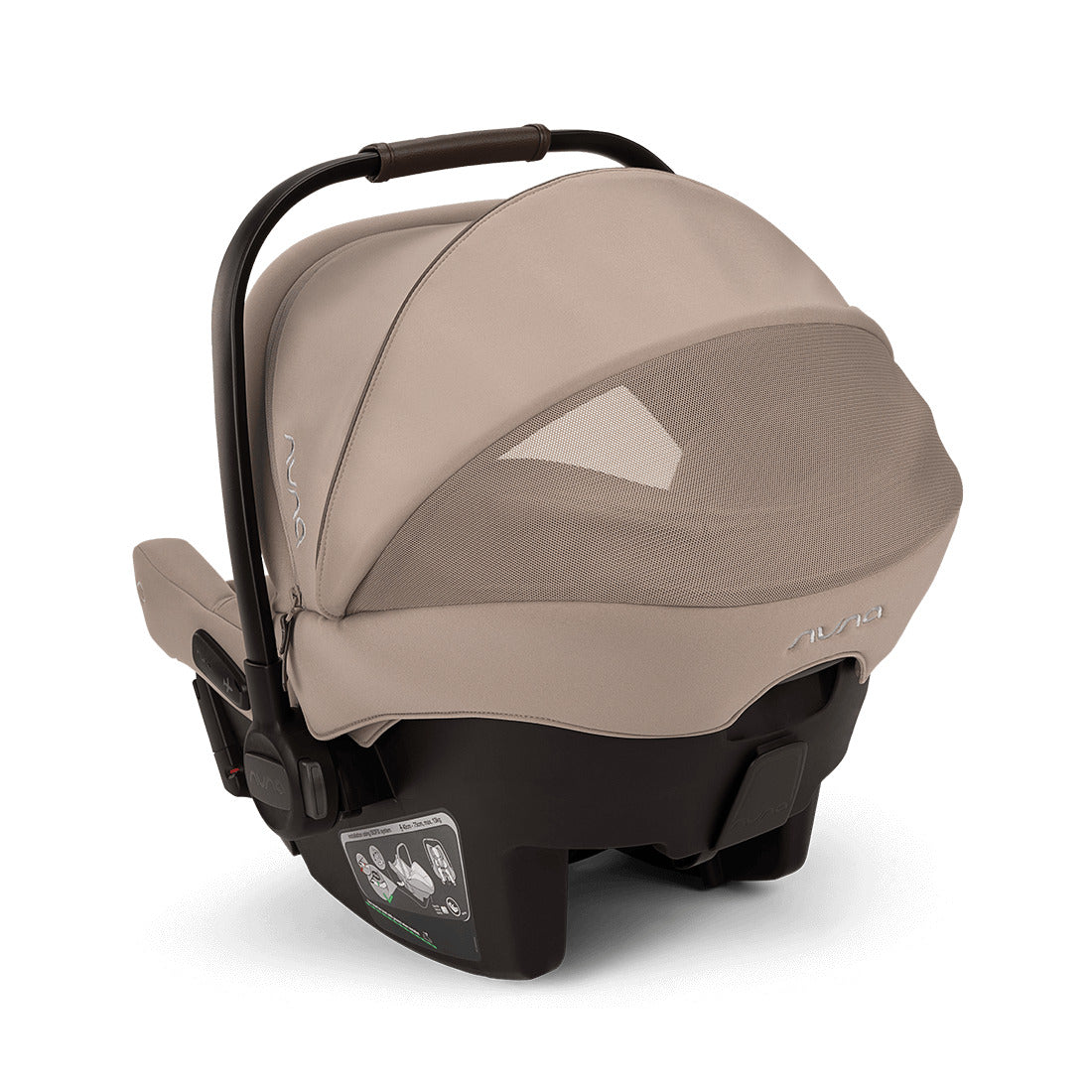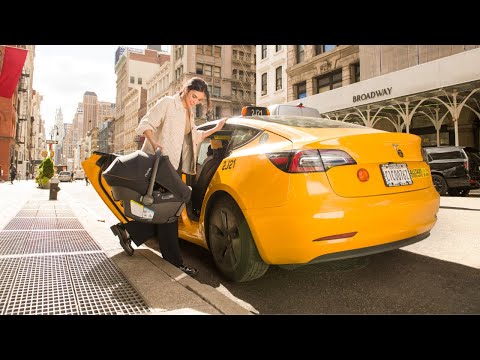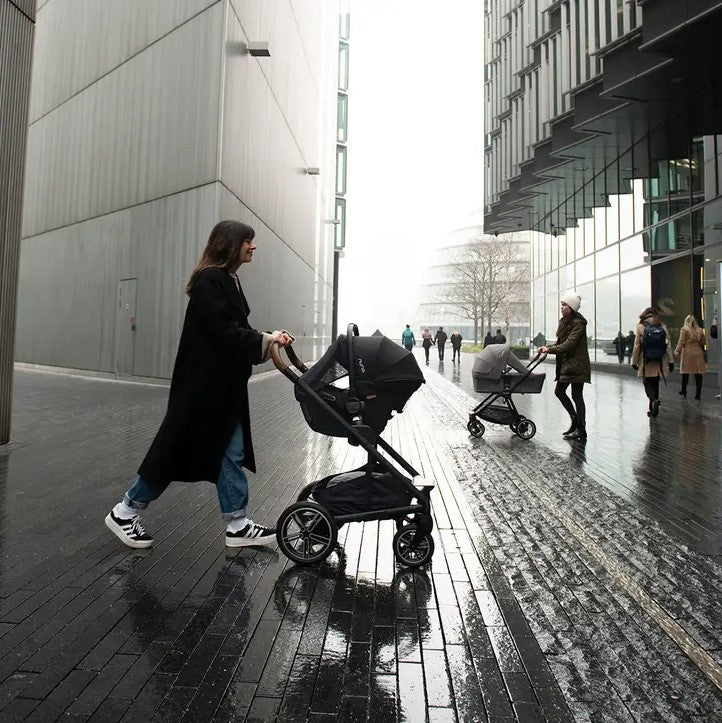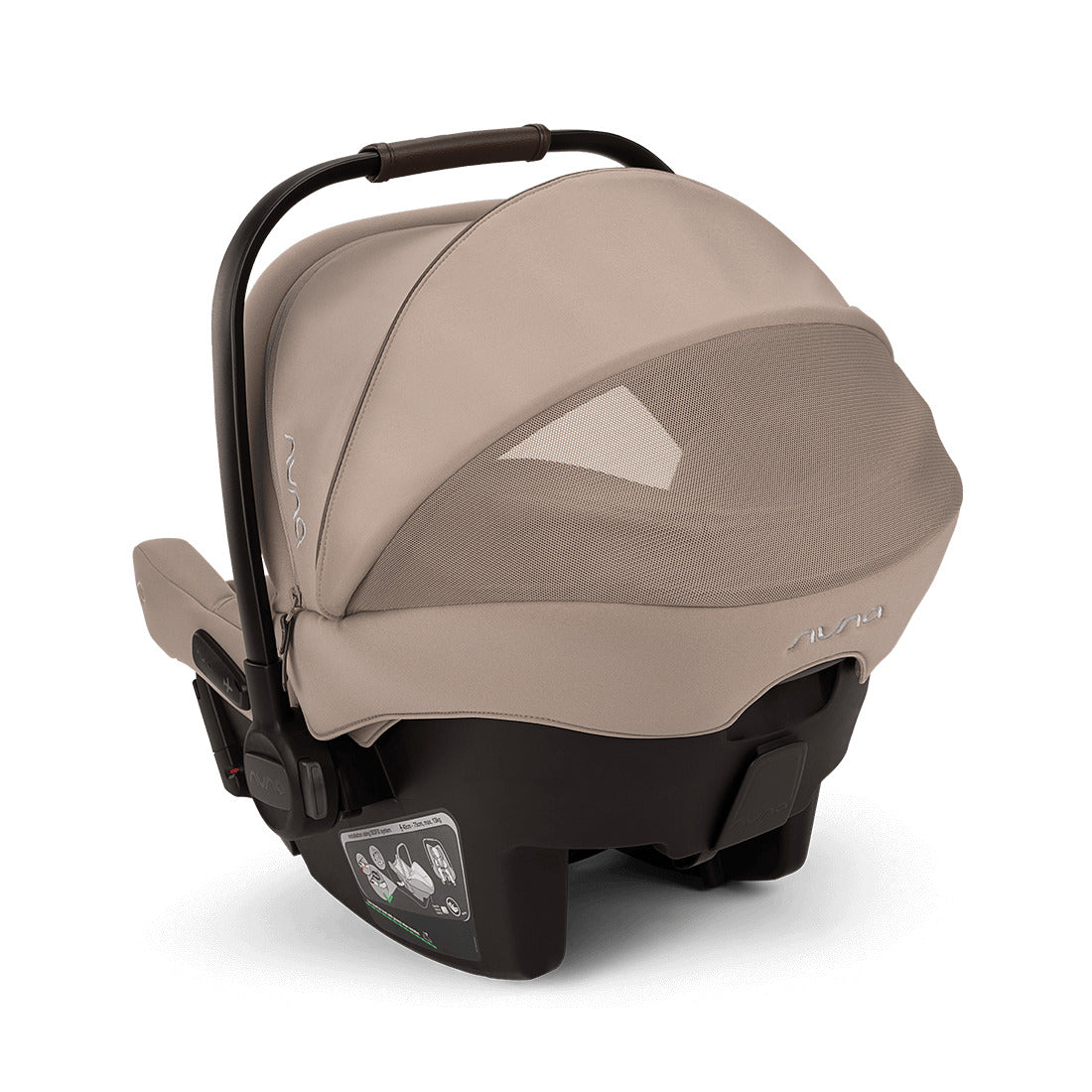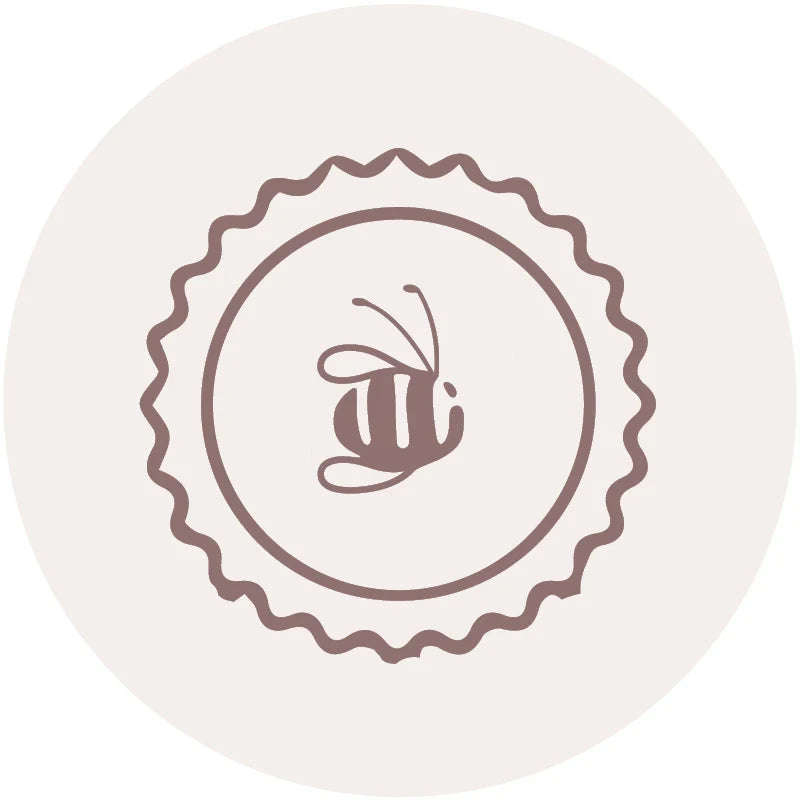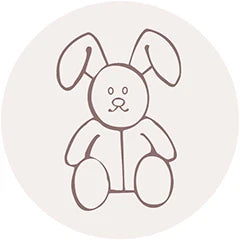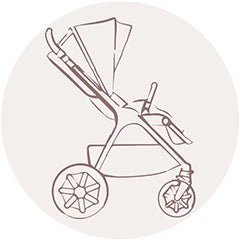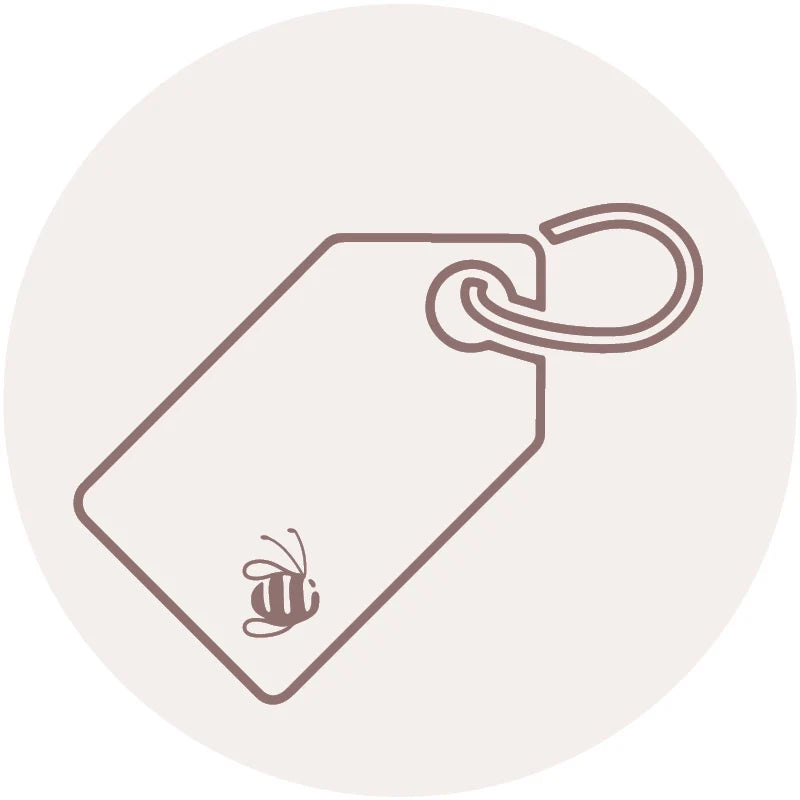Nuna Pipa Urbn - Free Voucher
Nuna Pipa Urbn - Free Voucher
SKU:NCF15610CDRGL
Clothing Prem to 18 Months
| Size | Age Guide | Weight | Height |
|---|---|---|---|
| Premature | Premature or Small Newborn | Up to 4Kg | Up to 55cm |
| Newborn | 0-3 months | 4-6Kg | Up to 62cm |
| 3 Month | 3-6 months | 6-8Kg | Up to 68cm |
| 6 Month | 6-12 Month | 8-10Kg | Up to 76cm |
| 12 Month | 12-18 Month | 10-12Kg | Up to 84cm |
| 18 Month | 18-24 Month | 12-14Kg | Up to 92cm |
Clothing 2 to 6 Years
| Size | Age Guide | Height | Chest | Waist | Hip |
|---|---|---|---|---|---|
| 2 Year | 2-3 Years | Up to 100 cm | 56 | 51 | 58 |
| 3 Year | 3-4 Years | Up to 105 cm | 58 | 53 | 60 |
| 4 Year | 4-5 Years | Up to 110 cm | 60 | 55 | 62 |
| 5 Year | 5-6 Years | Up to 115 cm | 62 | 57 | 64 |
| 6 Year | 6-7 Years | Up to 120 cm | 64 | 59 | 66 |
Beanie Size Guide
| Size | Head Circumference | Age Guide |
|---|---|---|
| Premature | 31-35 cm | Premature or Small Newborn |
| Newborn | 35-40 cm | Newborn |
| Small | 40-43 cm | 3-6 Months |
| Medium | 43-47 cm | 6-18 Months |
| Large | 47-52 cm | 18-3 Years |
Sunhat Size Guide
| Size | Head Circumference | Age Guide |
|---|---|---|
| Newborn | 37-40 cm | Newborn |
| Small | 40-43 cm | 3-6 Months |
| Medium | 43-46 cm | 6-12 Months |
| Large | 46-49 cm | 12-24 Months |
| Xtra Large | 49-54 cm | 2-4 Years |
Sleep Pods Size Guide
| Size | Weight | Age Guide | Measurement(Back to Hem) |
|---|---|---|---|
| Newborn | 0-6 kgs | 0-3 Months | 60.5 cm |
| Small | 0-8 kgs | 3-6 Months | 66 cm |
Booties Size Guide
| Size | Age Guide |
|---|---|
| Newborn | 0-3 Months |
| Small | 3-6 Months |
| Medium | 6-12 Months |
| Large | 12-18 Months |
Pretty Brave Baby
| Foot Length (mm) | Insole Length (mm) | EU | UK | Age | INT |
|---|---|---|---|---|---|
| 95-104 | 110 | 16/17 | 2 | 0-6m | S |
| 104-114 | 118 | 18 | 3 | 6-12m | M |
| 114-123 | 127 | 19/20 | 4.5 | 12-18m | L |
| 123-137 | 142 | 21/22 | 5.5 | 16-22m | XL |
Pretty Brave 1st Walker
| Foot Length (mm) | Insole Length (mm) | EU | UK | Age |
|---|---|---|---|---|
| 114-120 | 125-128 | 19 | 3 | 1 yr |
| 120-126 | 132-135 | 20 | 3.5 | 1-2 yrs |
| 126-132 | 138.5-141.5 | 21 | 4.5 | 1-2 yrs |
| 132-138 | 145-148.5 | 22 | 5 | 2 yrs |
Crywolf Swim Nappy
| Size | Length (waist to crotch) | Crotch Width (side to side) |
|---|---|---|
| 0-1 yr | 1-2 yrs | |
| 37 | 38 | |
| 14.5 | 15.5 |
Crywolf Rash Suit
| Size | Length (back neck to crotch) | Chest (arm to arm) | Waist (side to side) | Sleeve (neck to cuff) | Neck Opening(diameter) |
|---|---|---|---|---|---|
| 6-12 Months | 1 yr | 2 yrs | 3 yrs | ||
| 40 | 42 | 44 | 46 | ||
| 25 | 26 | 27 | 28 | ||
| 24 | 25 | 26 | 27 | ||
| 30 | 31.5 | 33 | 34.5 | ||
| 13.25 | 13.25 | 13.8 | 14.3 |
Low stock
Couldn't load pickup availability
Overview
Overview
The PIPA urbn in Cedar colourreimagines the future of travel with baby. This one-of-a-kind, ultra-lightweight infant car seat weighs only 3.3 kg* and installs using an advanced, built-in ISOFIX system. This groundbreaking baseless installation feature is integrated into the car seat, allowing for super secure installs** in seconds when moving from car, to taxi, to rideshare and offering a new generation of journeys. It also features a one-handed, quick release from pushchair and vehicle and Nuna’s iconic Dream drape™ for ultimate privacy - so you and baby can navigate life with modern-day ease.
*Without canopy and insert
**Refer to the vehicle fitting list
Technical Specification
Technical Specification
User Guide
User Guide
Delivery and Returns
Delivery and Returns
- Delivery: Free within NZ on orders over $100 (excluding bulky items) or $8 standard shipping
- Returns: Accepted within 14 days of receipt with proof of purchase
- Some items are excluded from returns including sale items, hardware, car seats, prams, monitors and personal items - please click here for the full list.
Share this product
Recently Viewed Products
Related Blogs
The Benefits of Having an Infant Capsule
The Benefits of Having an Infant Capsule When preparing for life with a newborn, it’s easy to feel overwhelmed by the gear you’ll need. However, one item that quickly proves indispensable is the infant capsule. Not only does it ensure safe travel for your little one, but it also simplifies everyday routines in ways that many new parents come to appreciate. So, what makes an infant capsule so essential? 1. Seamless TransitionsOne of the most convenient features of an infant capsule is the ability to move your baby from the car to the pram—or straight into the house—without disturbing their sleep. With a capsule, there’s no need to unbuckle or shift a drowsy newborn between seats. Simply lift the carrier off the base and you’re good to go. It's important to remember that newborns should only sleep in capsules or car seats for short periods. 2. Tailored Newborn FitUnlike regular car seats, capsules are specifically designed to support newborns, offering a snug and comfortable fit from the very first days. Most come with removable newborn inserts to cradle your baby and provide optimal positioning as they grow. 3. Safety FirstInfant capsules are designed with your baby’s safety as a top priority. With features like side-impact protection, memory foam padding, and extendable canopies, they provide extra reassurance for parents who want the very best protection for their little one while on the move. 4. Lightweight and PortableInfant capsules are lighter and easier to carry than convertible car seats. They’re perfect for quick trips out or when you want to pop into the shops or grab a coffee with your baby in tow. The portability of these capsules is a game-changer for busy families who need to get in and out of the car quickly. 5. Travel System ReadyA key benefit of many infant capsules is their compatibility with prams, creating a complete travel system. This makes it simple to move your baby from the car to the pram, or anywhere else, without disturbing them too much. Many premium capsules integrate seamlessly with strollers, giving parents the flexibility to choose the best combination for their lifestyle. Choosing the Right Capsule for Your Family When it comes to choosing the best capsule for your needs, some designs offer unique features that cater to different lifestyles. For families looking for a versatile, all-around solution, the Nuna ARRA™ Flex offers an exceptional blend of comfort and convenience. The ARRA Flex features a nearly-flat 157° recline, allowing for optimal spine and hip development, and can be used both in the car and on any Nuna stroller. Its sleek design and thoughtful functionality make it ideal for parents seeking a capsule that accommodates their busy lives, while still prioritizing baby’s comfort. For those prioritizing the best sleeping position, the Nuna CARI™ NEXT is a full lie-flat carrycot that secures into the base, providing a natural, ergonomic sleep position for baby. It’s an ideal solution for longer journeys, allowing your baby to rest comfortably throughout the ride. Its lightweight design and stylish finish offer both practicality and elegance for parents who want a premium, travel-friendly option. It's also compatible with most of the Nuna strollers too! If you live in the city or often switch vehicles, the Nuna PIPA URBN is the perfect option. With built-in ISOFIX and no need for a separate base, it installs in seconds—ideal for ride shares or households with multiple cars. Its ultra-lightweight construction and quick installation make it an incredibly practical choice for families on the go. For those seeking a capsule with premium safety features and materials, the Maxi Cosi Mico Luxe is a soft and comfortable option with excellent side-impact protection. The capsule’s breathable bamboo fabric and superior padding ensure baby stays snug and supported. Another excellent choice is the Cybex Cloud T, a premium infant capsule offering a recline function for a comfortable, lie-flat position outside the car, ideal for newborns. It features a 180° rotating mechanism for easy on-and-off boarding and can be paired with the Base T for secure installation. The Value of a Capsule No matter which capsule you choose, having one can make a huge difference in your daily life. They provide smooth transitions, superior comfort, and important safety features that give parents peace of mind. Whether it’s a quick errand or a long drive, the right capsule can make life with a newborn that much easier. For parents who seek a perfect balance of style, safety, and functionality, the right infant capsule isn’t just about convenience—it’s about providing the best possible experience for both you and your baby, wherever your day takes you. The above suggestions and many more options are now available online, here at Dimples!
Learn moreSafety On-The-Go: Dimples' Free Car Seat Installation Service
In the whirlwind of preparing for a new arrival, there’s one essential item that stands out among the rest: a car seat. You’ll want this sorted in plenty of time as you won’t be able to drive home from the hospital without it! With so many belts and straps, correctly installing a car seat can be daunting. Whether you’re buying a newborn capsule or graduating them into their next seat , it’s important to get the right fit in your vehicle. That’s why we offer one FREE car seat installation when you buy the seat from us. And we’ve just made it even easier, with our ONLINE BOOKING SYSTEM. If you’re not near one of our physical stores – Newmarket and Christchurch – you can instead book in for a Virtual Car Seat Fitting Check. Book an Appointment Safety First: Proper Installation Matters If you’re not a fan of reading instruction manuals, car seat installation can be stressful. But it’s an important thing to get right to keep your little one safe. Properly installed car seats can significantly reduce the risk of injury or death in the event of a crash. Expert Guidance: In-Store Installations Dimples’ can both install your car seat for you and talk you through the process so you’re confident installing it yourself should you need to in the future. Our knowledgeable staff members undergo extensive training to become qualified Child Restraint Technicians. When you purchase a car seat from Dimples, you can rest assured that it will be installed correctly, following manufacturer guidelines. We'll also take the time to demonstrate proper usage and answer any questions you may have, ensuring that you feel confident using the seat. Bridging the Distance: Virtual Video Calls If you can’t visit one of our stores in person, don’t stress, we've got you covered. You can book a Fit Check online. This is where you do your best to install the car seat first, then on a video call with one of our car seat technicians, we check the fit and help with any issues. Have you bought your seat elsewhere? No problem – we offer a car seat installation service for $50 if the seat wasn’t bought from Dimples. Visit Dimples today to explore our wide selection of premium car seats. Premium brands, great service and peace of mind.
Learn moreHow to Choose a Car Seat
How to Choose the Right Car Seat – When You're Spoiled for Choice Choosing a car seat can feel overwhelming – especially when your baby’s safety, comfort, and your lifestyle are all at stake. With capsules, convertibles, boosters and everything in between, how do you know where to start? Here's a practical breakdown to help you compare the different types of car seats and figure out what’s right for your whānau. Capsule Car Seats Best for: Newborns to approx. 12 months (up to 13kg depending on the brand)What they are: Rear-facing, portable infant car seats that click in and out of your vehicle. Why parents love them: Can transfer a sleeping baby from car to stroller without waking them. Easy to carry with a handle. Most work with a base that stays in the car – simple click-and-go. Things to consider: You’ll likely only use it for the first year. Weight matters – some are much easier to carry than others. Great options to compare: Nuna Pipa Next – lightweight (only 2.8kg) and super portable. Nuna Arra Flex – features three recline positions - including a near-flat 157° recline on the stroller or when used as a carry seat. Cybex Cloud T – lies near-flat outside the car, great for stroller naps. Maxi Cosi Pebble 360 Pro – ergonomic recline, 360° base for easy loading. Nuna Pipa Urbn – ideal for city living or rideshares with built-in ISOFIX, no base required. Nuna Cari Next – a lie-flat carrycot that’s also a car seat – perfect for naps and spinal support. Convertible Car Seats Best for: Birth to approx. 4 years (or longer depending on the seat)What they are: Seats that start rear-facing and convert to forward-facing as your child grows. Why parents love them: Cost-effective – you’ll use it for several years. Often more spacious and padded than a capsule. Can remain rear-facing for longer, which is safest. Things to consider: Not portable – stays in the car. Check your car for what installation method you need (ISOFIX or seatbelt). Some have rotating bases to make buckling in easier. Great options to compare: Nuna Todl Next – works with a rotating base for easy access. Nuna Revv – built-in 360° rotation, no separate base required. Nuna Rava - seatbelt installed, and known for its simple installation, generous legroom, and plush comfort. Ideal for families who want a long-lasting seat without the need for a base or ISOFIX. Cybex Sirona T – comfortable, safe and easy to use with excellent recline and rotation. All-in-One (Convertible + Booster) Best for: Birth to approx. 11–12 yearsWhat they are: Car seats that transition from rear-facing to forward-facing to booster seat. Why parents love them: One purchase that lasts for years. Saves money in the long run. Ideal for parents who don’t want to keep upgrading. Things to consider: Not portable – stays in the car. No rotating options available. Great options to compare: Nuna Exec – rear-facing from birth, forward-facing to booster mode up to 148cm / 54kg. Britax One4Life Slim – rear-facing to booster mode up to 160cm / 54.4kg. Booster Seats Best for: 4+ years (or as per height and weight guidelines)What they are: Forward-facing seats that position the vehicle seatbelt properly across your child. Why parents love them: Simple to use and install. Gives older kids a good seat height and a view out the window. Often more compact. Things to consider: Only suitable once your child meets minimum size requirements. Great options to compare: Nuna AACE LX – adjustable height, recline, and side impact protection. Britax Skyline – affordable, comfortable, and lightweight. Maxi Cosi Titan Pro – grows with your child from toddler through to booster stage. Other Key Considerations Car fit: Not all seats fit all vehicles – check for compatibility, especially if fitting multiple seats. Ease of use: Consider rotating seats if you struggle with lifting your child in and out. Installation method: ISOFIX is quicker and easier, but seatbelt installs offer flexibility for older vehicles or travel. However ISOFIX does have lower weight restrictions (generally around 18kgs). If a seat allows for both ISOFIX and seatbelt installation it can pay to opt for Vehicle Seat Belt installation as it eliminates having to switch installation method once weight limits are reached. Longevity: Weigh up whether you want a dedicated seat for each stage or one that adapts as your child grows. Need Help Choosing? Our certified car seat technicians are here to help you make the best choice for your family. Visit a Dimples store and get personalised advice, try seats in your car, and enjoy our free professional car seat fitting with purchase. You can also take our handy quiz to find out what might work best for you here Whichever seat you choose, safety and comfort come first – and we’re here to make sure you get both.Shop the full car seat range online or in-store today.
Learn moreBaby Comforters: What Are They, and How To Introduce Them
There’s something very special about watching your baby snuggle into their favourite little blanket or soft toy. For many little ones, a comforter (or blankie) becomes more than just a bedtime accessory - it’s a trusted friend that brings a sense of calm and reassurance through every new stage of growing up.
Learn more

